Here I would introduce one additional SDuino variant, SDuino-Qi ! Qi is a wireless power transfer system and widely used for cellphone charging. This time, small coil is embedded inside SD card shell with Qi interface card and minimum Arduino compatible. As same as my previous SDuino series, this card can be programmed through SDuino writer (FTDI embedded interface...)
![]()
In the another project (color OLED watch), I confirmed that roughly re-winded coil still works as a receiving coil of Qi. As you see, this very rough coil produces 4.98 V !!
![]()
I quickly re-size the coil dimension almost half of original and put it in my small watch connecting with Lipo charging circuit. working perfect!
![]()
When I see the case of SDuino, it surely requires 3.3 V as power supply. I have been searched "thin battery" can be accommodated inside SD card shell to solve power supply problem, but I could not.. So this time, I have tried to put Qi system inside SD card, and confirmed surely working!!!
![]()
This is the inside view, without Arduino (ATMega328) part. Very rough coil is put bottom of SD card shell, and it is made of thin coated wires inside Kapton® tape. During power transfer, coil will produces some heat and this type of heat-resistant tape is indispensable (Please never try with general Scotch tape). The Qi interface part is simply cut down from Qi cell phone charger in the above picture. Indeed, half of space is occupied by Qi.
![]()
This is the full mounted shape. Very tightly arranged and I have to forget my ambitions to put OLED... ATMega328 part is full compatible with Arduino Pro 3.3V 328 version.
![]()
This is the wired state. SD card shell is very weak for heat and need to solder terminals as short time as possible...
![]()
And finally SDuino-Qi is working!! Actual operation can be found in the following movie... Have fun!
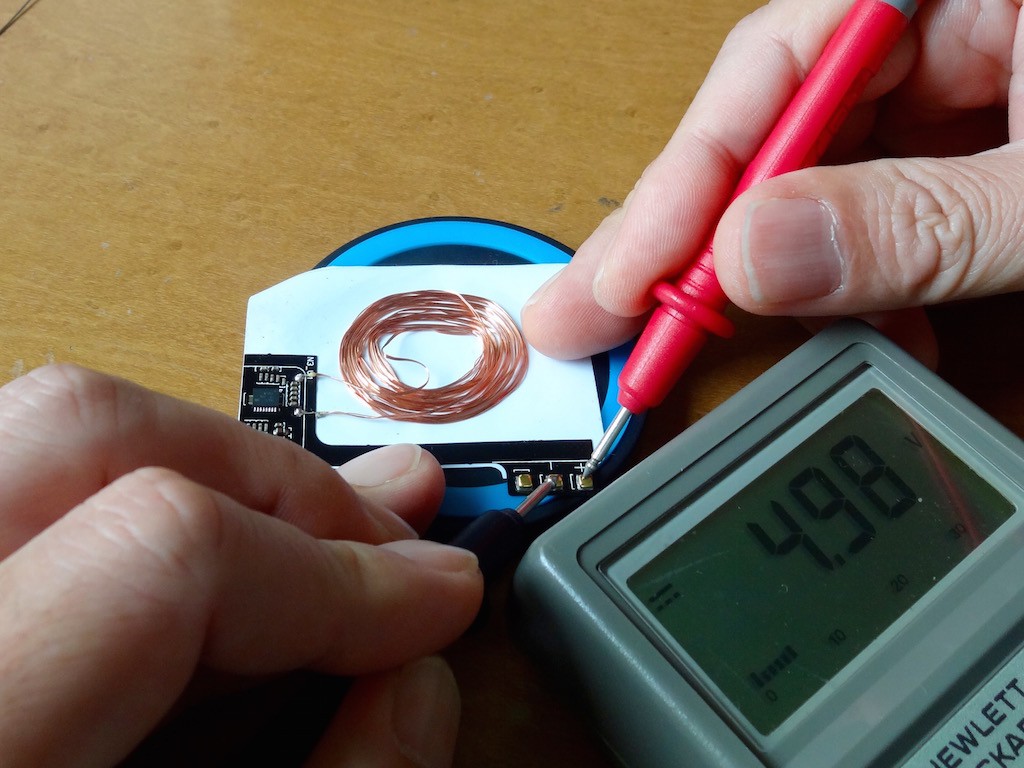
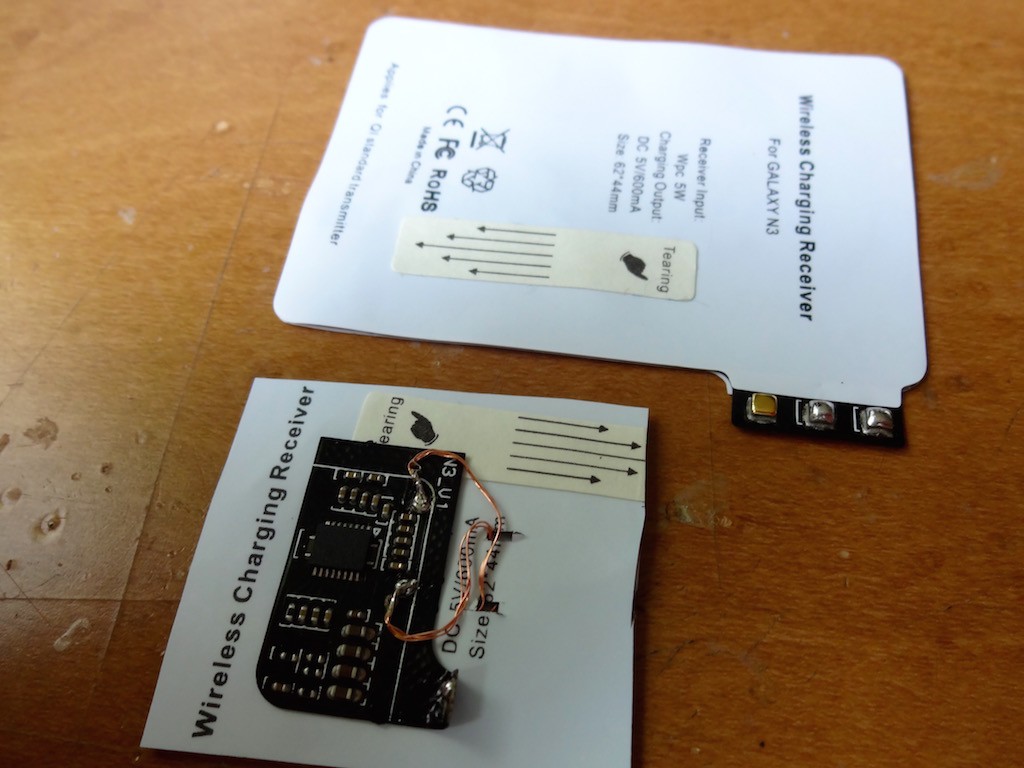
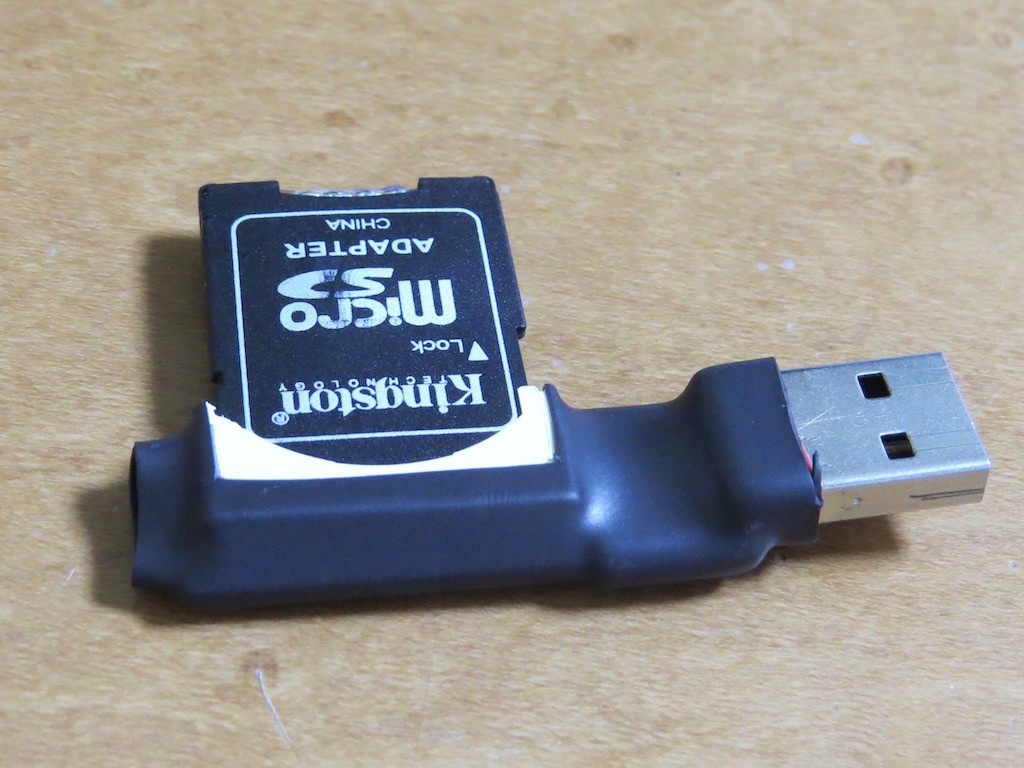
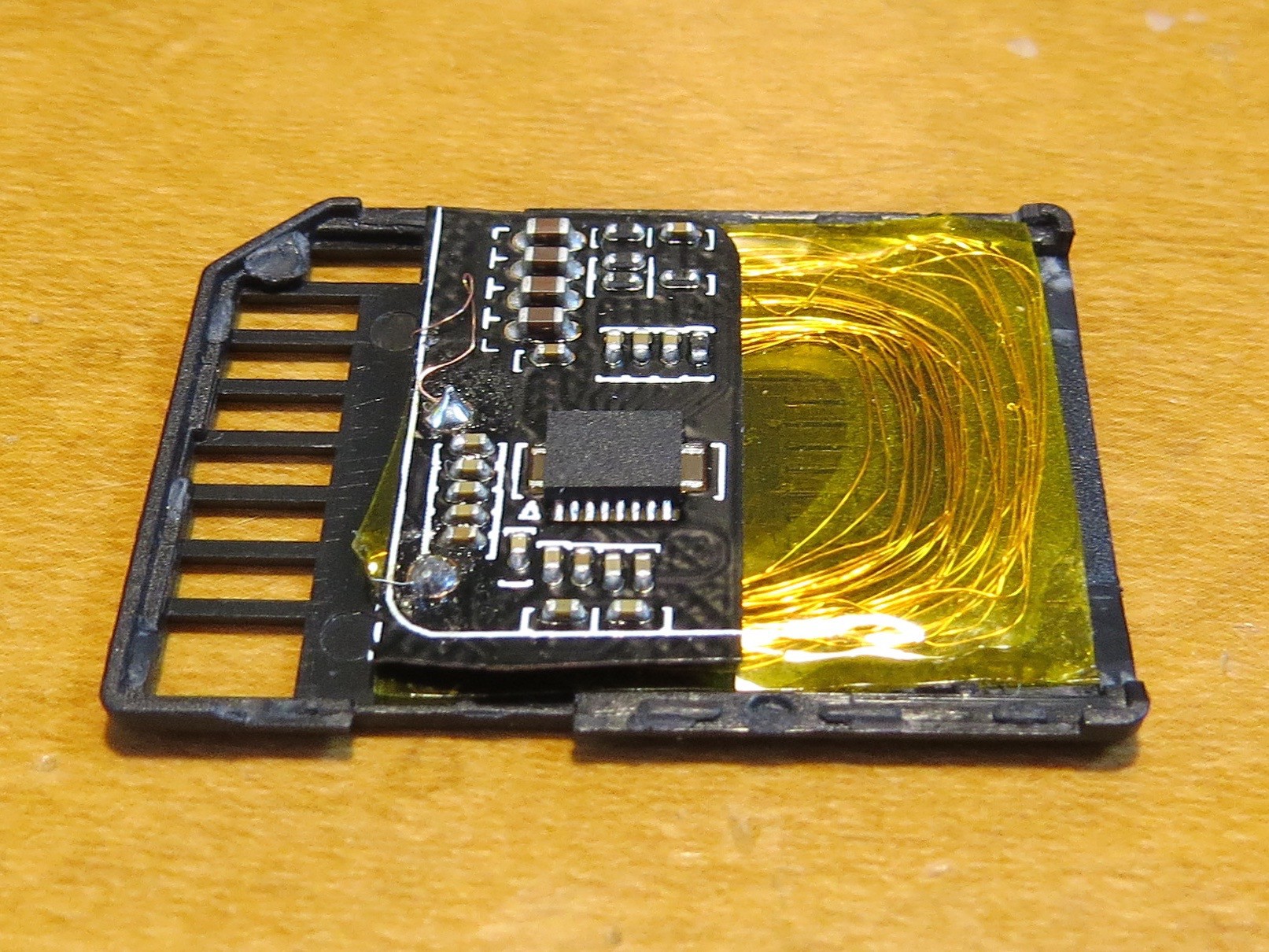
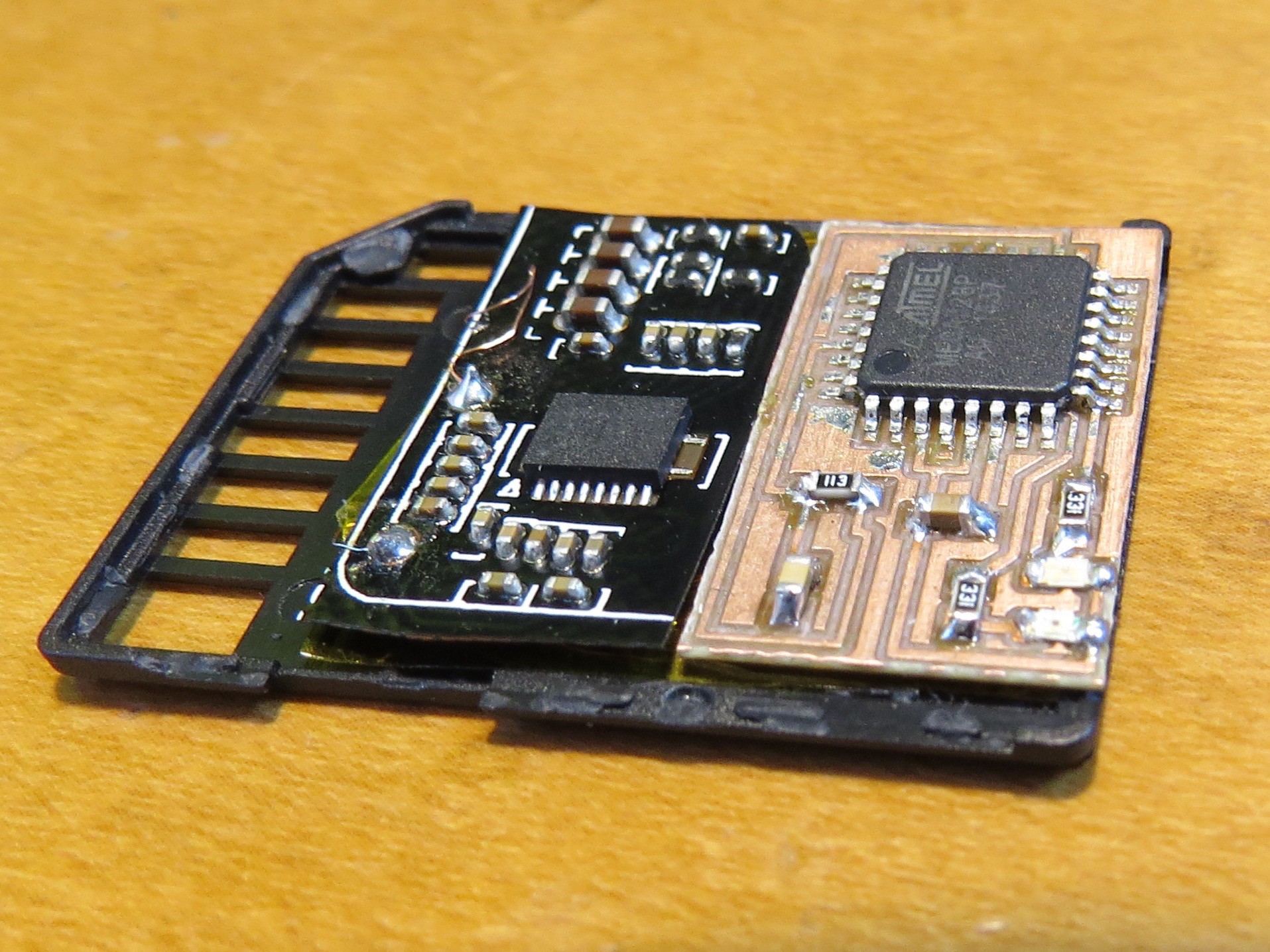
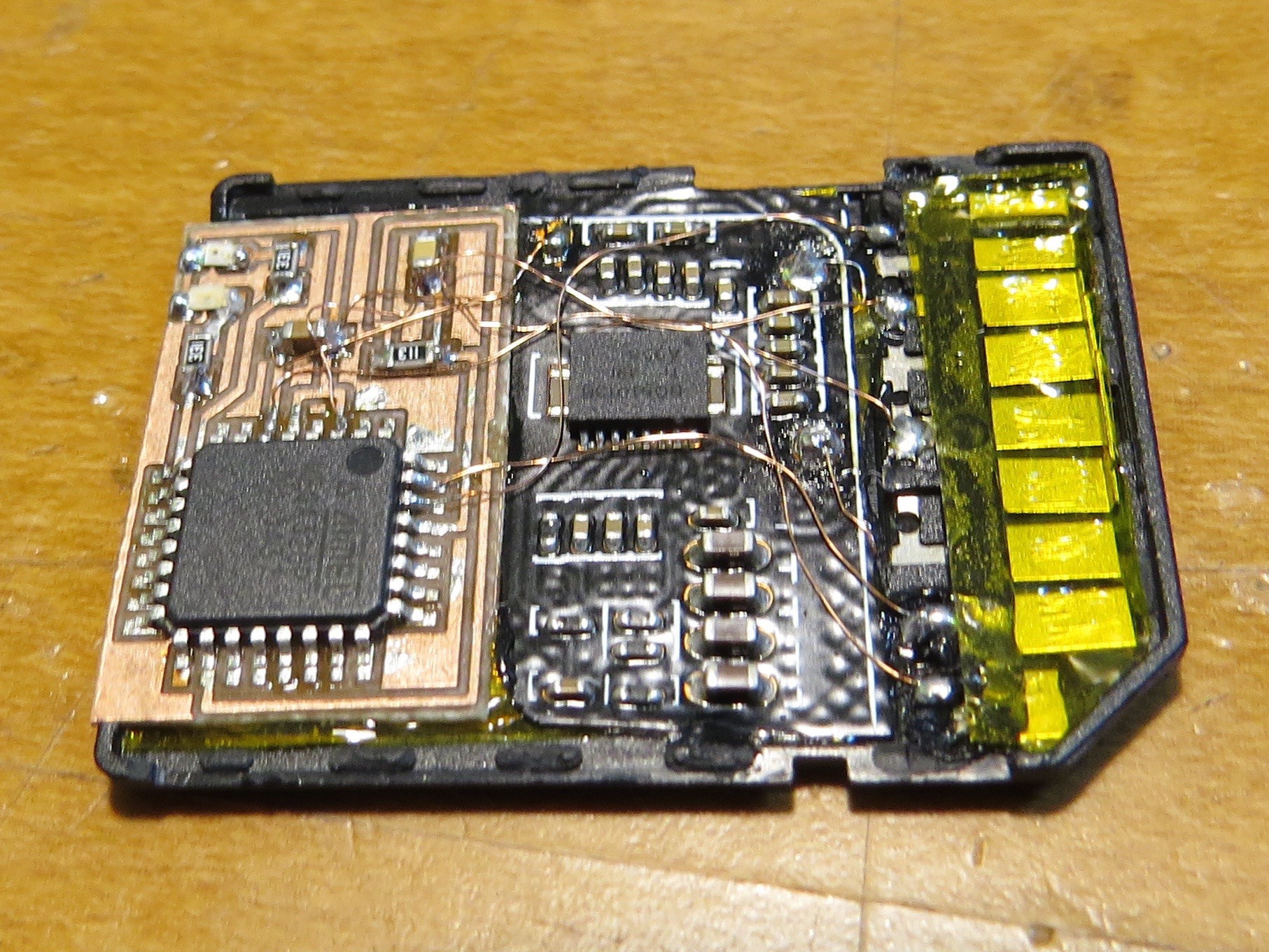
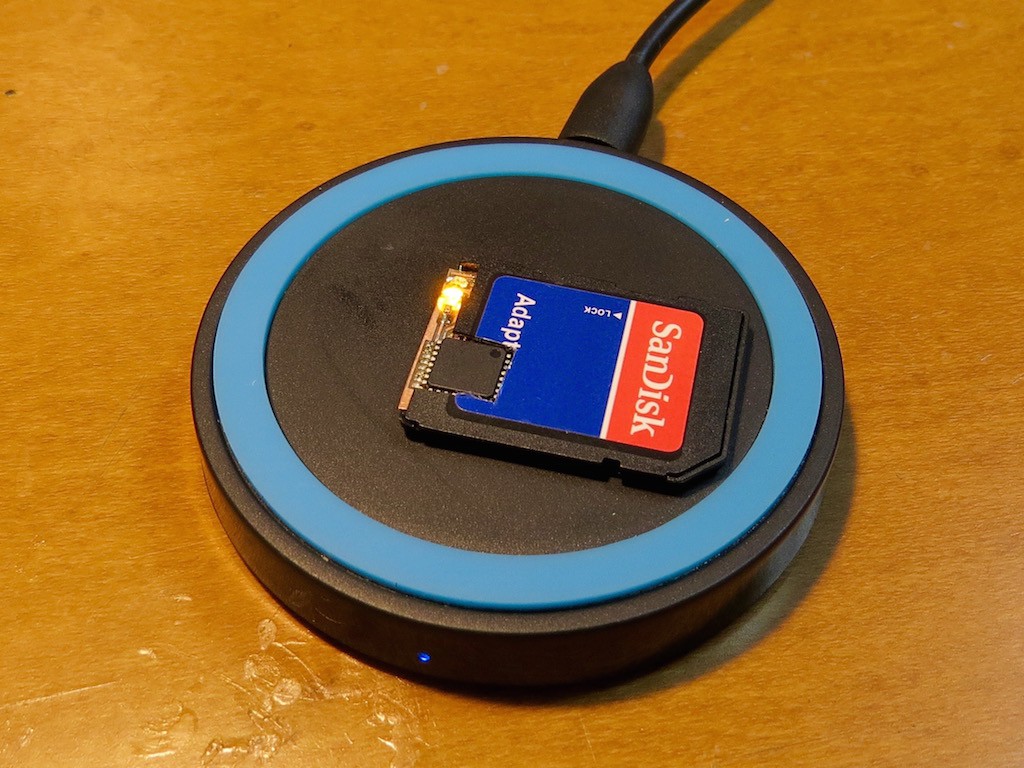
 kodera2t
kodera2t
Discussions
Become a Hackaday.io Member
Create an account to leave a comment. Already have an account? Log In.
[this comment has been deleted]
Even (V)QFN would give you more room, you could find a local hacker space with a reflow-toaster and use 402 parts. BGA could be tough
Are you sure? yes | no
Thank you advise
Are you sure? yes | no
May I ask why not use smaller package components?
Are you sure? yes | no